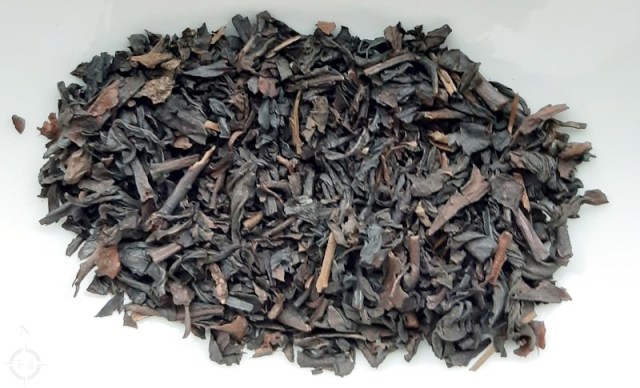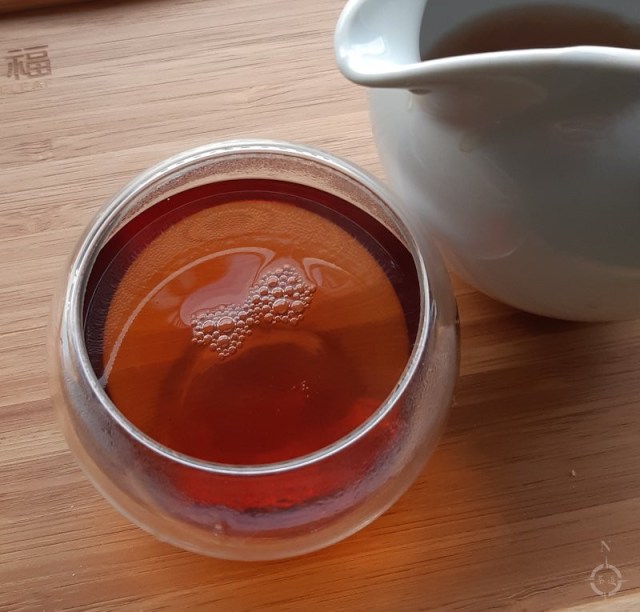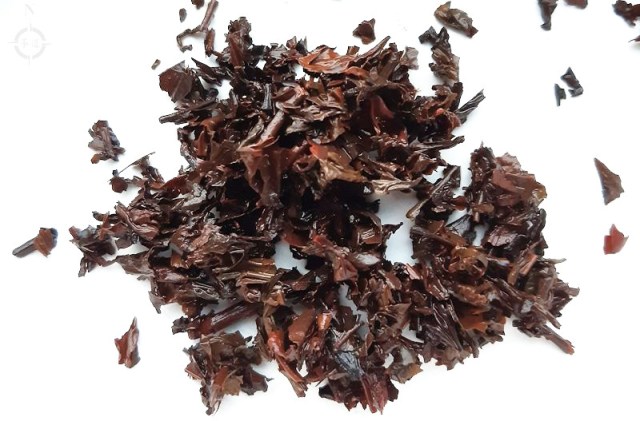
I bought this tea from House of Tea way back in mid-October 2020, as part of the “Three Taiwanese Black Teas” order that also saw Yu Chi Hong Yun, and Assam Taiwan drop onto my tea table.
House of Tea’s notes inform us that the tea was produced by a Mr. Xiang in the San Xia district of New Taipei, and that it is a blend of various Taiwanese cultivars.
When I bought these leaves I intended to use them as a late Autumn outdoorsy tea, envisaging myself boiling water over a campfire in the midst of bare oaks and defiant pines, and supping the tea whilst staring into the embers as sparks rose into the dark, frozen Boreal sky. Other stuff got in the way of that, and then we were trapped in the gravitational pull of Christmas and New Year, so here we are, approaching mid-winter, trying again…
In the caddy this tea packs quite a punch, not as pungent as other Lapsang Souchongs to be fair, but still more than enough to grab your attention. Once out of its container, however, it suddenly became a lot less shouty, more rounded.
The plan here was to brew up indoors, then sup outside, on our balcony, in order to get at least some idea as to how the tea would perform al fresco. I decided against steeping the tea outdoors because I hadn’t quite figured out how I was going to keep the pot warm whilst the tea infused.
The pot I used was a 200 ml “easy gaiwan” type, one I picked up some time ago at a Chinese market in Stockholm, which for a while now has been my official smoked tea pot. The gong dao bei was an old cream jug picked up in England a while back, and to keep the liquor as warm as possible for as long as possible I used a double walled glass cup.
Steeping Method
-
Water Used: Filtered tap water
-
Weight of dry leaf: 3.5 grams
-
Steeping vessel: 200 ml ceramic teapot
-
Water temperature: 100°C
-
No. & duration: 4 infusions of 30, 30, 40, and 60 seconds
Conditions on the balcony were about as good as I could reasonably expect at this time of year – the temperature was -4°C, and it was overcast, with very little wind.

The liquor seemed to have two basic components to it. On the ground floor there was a nice, generic black tea thing, which felt like a greatest hits compilation album made up of the best characteristics of the Taiwanese black teas I’ve sampled recently, and sat on top of that was the smoke and the wood.
Badly made smoked tea can be genuinely unpalatable, but this is a good example of how pleasant they can be if done well.
The smoke was subtle, refined almost, more the cherry on top of the cake rather than a two inch thick layer of icing. In fact, the smokiness was so gentle that it allowed the aroma of pine wood to shine through, reminding me of the woodshed at our family’s place in the country.
The soup was luscious and lip-sticky, as well as warming and soothing, perfect for a cold damp day outside.

In the cold the tea cooled rapidly, so each infusion was a sip, slurp, gone job. In my ideal campfire scenario this might not be a problem though, as I would be able to park the teaware close to my fire in order to keep it warm.
Hopefully before the year’s much older I’ll get to have a session with this tea at a quiet spot deep in my favourite bit of woodland. As weird as this might sound, I get the impression that this tea would be the perfect accompaniment to wet grass, damp trees, cool air, and a gently mulching forest floor. Fog would be a bonus. Once warmer days roll around I think this tea’s special appeal might simply fade away, like mist on a spring morning.
Good stuff.

Pingback: Friday Roundup: January 31st – February 6th | WOMEN’S HEALTH